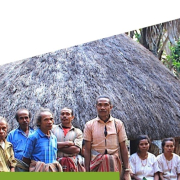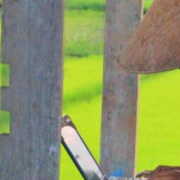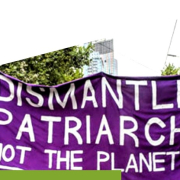The Shifting Patterns of Civil Society Participation in the Digital Space: Lesson Learned from the Hashtag “No Viral No Justice”
brief articleParticularly, social media was not novel in Indonesia prior to the COVID-19 pandemic. According to data from We Are Social and Hootsuite, the proportion of internet users in Indonesia stood at 196.7 million during January 2020, constituting 73.7% of the overall populace. About 56% of this population, or 150 million, utilize social media. At that time, social media usage primarily facilitated individual existence and social interaction, as evidenced by the prevalence of personal communication via WhatsApp, information sharing and engagement with friends and family via Facebook, and photos and videos on Instagram.
During the pandemic, social media usage is expanding and increasing. We Are Social and Hootsuite reported that the number of active social media users reached 170 million in 2021. This upward trend appears to be intensifying once the pandemic has passed in Indonesia. The data indicates that in 2023, the total of internet consumers in Indonesia amounted to 215.63 million. From before the pandemic to the present, the proportion of internet users has increased by around 23.16%.
This article aims to review how transformations in the behavior of social media users in Indonesia have coincided with the widespread adoption of social media platforms during the pandemic. User objectives are broadening to encompass not only the necessities of personal existence and social connections but also engagement concerning matters of economy, politics, culture, and even law. We discuss shifts in public sentiment regarding legal matters as expressed via social media using the hashtag “no viral, no justice.” This phenomenon is unique because legal justice concerns can encourage participation on social media through the monitoring of law enforcement performance.
The pandemic exacerbates the social impact of digital transformation as people express their views on legal matters. As evidenced by the hashtag “no viral no justice”, in addition to social and political issues, social media can be used to mobilize and convey community participation in the form of a justice campaign. In other words, the pandemic has encouraged society to utilize social media more strategically in its pursuit of legal justice.
The hashtag “no viral, no justice” was coined in 2021, after the publication by the Multatuli Project of the rape cases in North Luwu in 2019. The hashtag evolved from an initial expression of public dissatisfaction to a stance that exerted pressure on the police to re-examine a legal case in an accountable manner. Several incidents involving law enforcement have surfaced during this hashtag’s development, contributing to its ubiquitous status; further hashtags, including the hashtag “useless to report the police”. The hashtag’s development has led to a crisis of public trust due to the police’s lack of transparency, which is inextricably linked to the dissatisfaction expressed via the hashtag. Human rights activist Haris Azhar, believes that the mobilisation of participation in the digital domain is motivated by this crisis.
According to our analysis, this hashtag phenomenon also demonstrates the growing societal reliance on social media. There exists a perspective that regards social media as a strategic instrument to pursue justice. When it comes to advocating for justice, people rely more on social media to seek and speak out for justice than on the formal law enforcement and judicial systems. Put simply, the use of social media platforms to spread the hashtag “no viral, no justice” can be interpreted as public distrust towards the justice system, especially the police. This analysis is in line with Mahfud MD’s statement that people rely more on social media to seek and speak out for justice. The public exerts pressure on the police to expeditiously handle legal cases more equitably and transparently via social media. Social media is regarded as a more efficacious method compared to formal channels, which are often impeded by bureaucratic processes.
The hashtag also represents a novel form of engagement that can interpret civil society’s (CS) strength against state instruments (police). This hashtag offers an additional academic perspective, discussing the fact that the presence of CS is not consistently apparent concerning institutions and social capital. The presence of CS via hashtags represents CS engagement that takes place in the digital realm. Using advocacy, participation evolves from an initial state of sympathy to one of collective consciousness. All of this is performed voluntarily, serves the same purpose, and is distinct in that it does not centre on an organization (CSO). They are motivated solely by disillusionment with the protracted legal disputes, which extend to advocacy in a variety of legal cases. The dissemination of the hashtag throughout social media to urge police leaders to intervene against members who abused their authority demonstrated the efficacy of CS.
Nonetheless, this hashtag phenomenon merits a more critical examination, given that hasty information dissemination on social media is prone to impulsive behaviour, including unverified data. Furthermore, public oversight of law enforcement in the digital realm in Indonesia is limited to the police. Meanwhile, the performance of law enforcement is also related to other law institutions, such as the judiciary and the prosecutor’s office. Another analysis is the potential for inequality, which ultimately also creates injustice in the handling of legal cases. Because certain cases go viral, the hashtag “no viral, no justice” does attract attention and prompt reconsideration of their treatment. Nonetheless, this appears to increase the police’s urgency to respond swiftly to legal cases that only gain notoriety through social media. Conversely, non-viral cases might not garner the same level of attention. Additionally, despite the widespread influence of this hashtag, case resolution is confined to law enforcement. The progression of case management towards achieving equitable legal judgements does not end with law enforcement; rather, it extends to the prosecutor’s office and culminates in the court’s verdict. In the “Sambo” case, the judiciary, police, and prosecutor’s office reached a legally sound verdict that the public deemed “fair”. However, that verdict was overturned by the Supreme Court.
As a result, the disruption of social media caused by the pandemic has led to a surge in social media usage, including user engagement and content trends. As demonstrated by the hashtag “no viral, no justice,” social media can be utilised to advocate for legal causes. This is a democratic phenomenon in the digital space in which CS can independently and unofficially exert pressure on state instruments. However, this still raises the issues discussed previously. It is necessary to increase awareness and the capacity to verify information prior to its social media dissemination in order to address these issues. Regarding law enforcement, particularly the police, it is time to transform quick responses to CS advocacy on social media into community-based legal case complaints. Simultaneously, endeavours are underway to enhance confidence in additional law enforcement agencies, including the judiciary and the prosecutor’s office, in order to improve their professionalism and efficacy. in order to facilitate the achievement of social justice for the entire Indonesian populace, which is one of the state’s objectives.
References
Arianto, B. (2021). Pandemi Covid-19 dan Transformasi Budaya Digital di Indonesia. Titian: Jurnal Ilmu Humaniora, 5(233–250).
Kharisma, B. (2022). Surfng alone? The Internet and social capital: evidence from Indonesia. Journal of Economic Structures, 11(8), 1–17. https://doi.org/10.1186/s40008-022-00267-7
Meiliana, A. R. D. (2023). Soal “No Viral No Justice”, Mahfud Klaim Ribuan Kasus Selesai meski Tak Viral.
Nurhayati-Wolff, H. (2023). Internet usage in Indonesia – statistics & facts. Statista. https://www.statista.com/topics/2431/internet-usage-in-indonesia/#topicOverview
Project Multatuli. (2021). Tiga Anak Saya Diperkosa, Saya Lapor ke Polisi. Polisi Menghentikan Penyelidikan. https://projectmultatuli.org/kasus-pencabulan-anak-di-luwu-timur-polisi-membela-pemerkosa-dan-menghentikan-penyelidikan/
Putri, Z. (2023). MA Sebut Tak Adil, Kuat Ma’ruf Sebelumnya Divonis 15 Tahun Bui. https://news.detik.com/berita/d-6899882/ma-sebut-tak-adil-kuat-maruf-sebelumnya-divonis-15-tahun-bui
Riyanto, A. D. (2021). Hootsuite (We are Social): Indonesian Digital Report 2021. https://andi.link/hootsuite-we-are-social-indonesian-digital-report-2021/
Rosyad, T. A. R. A. S. (2023). The Viral Phenomenon on Social Media is a New Legal Norm-No Viral, No Justice. International Journal of Advanced Multidisciplinary Research and Studies, 3(4), 277–282.











Leave a Reply
Want to join the discussion?Feel free to contribute!